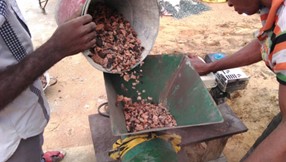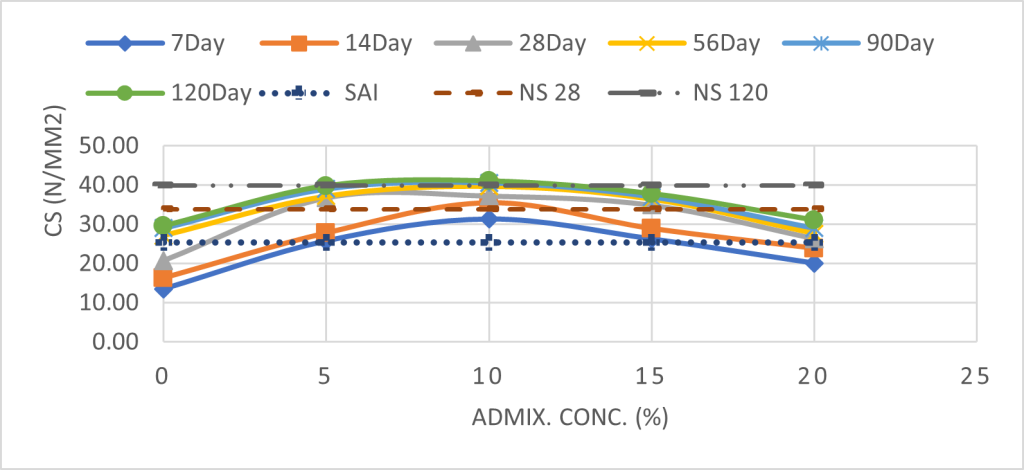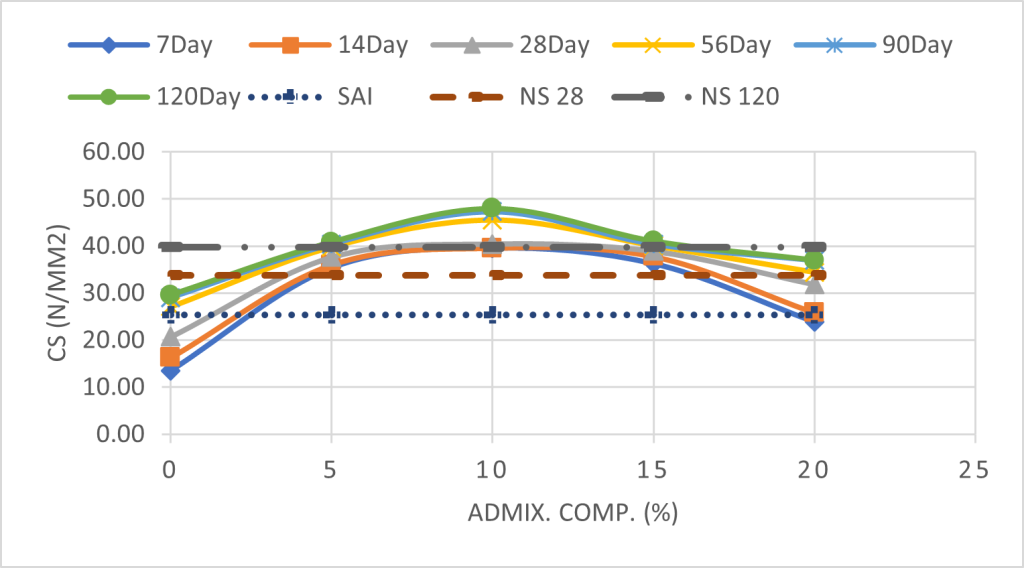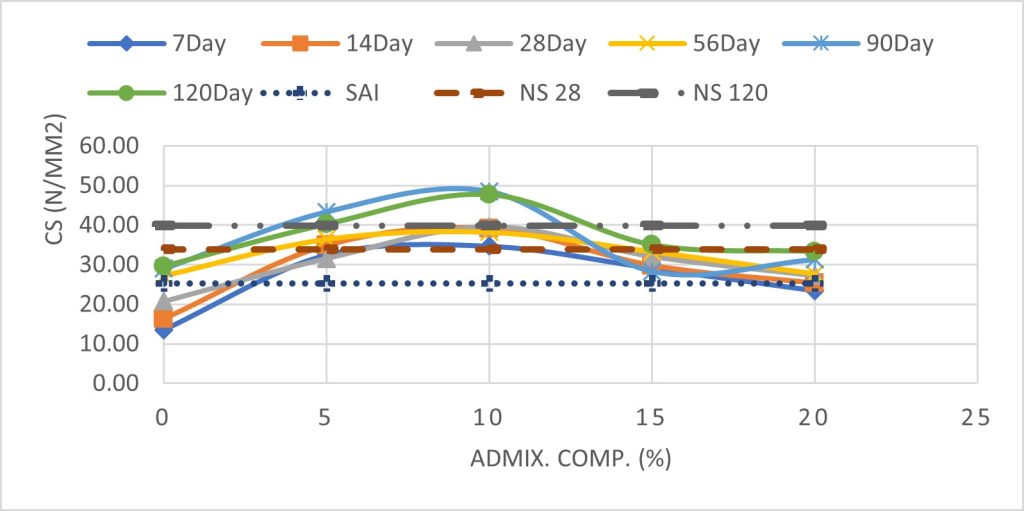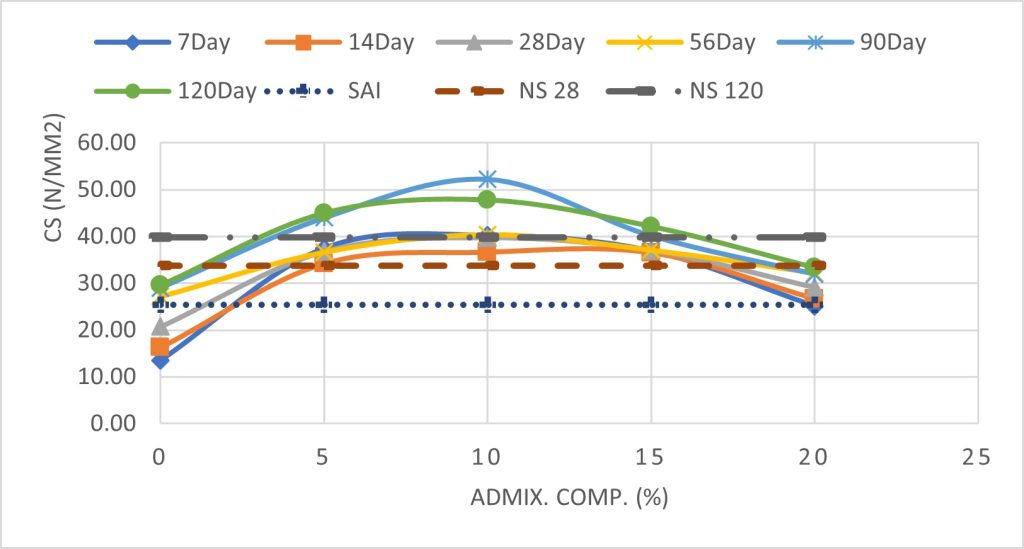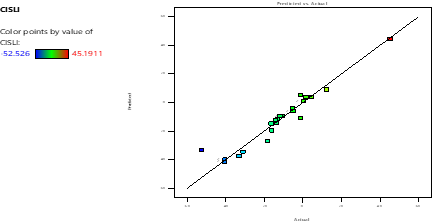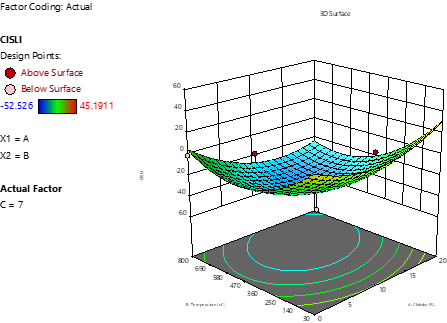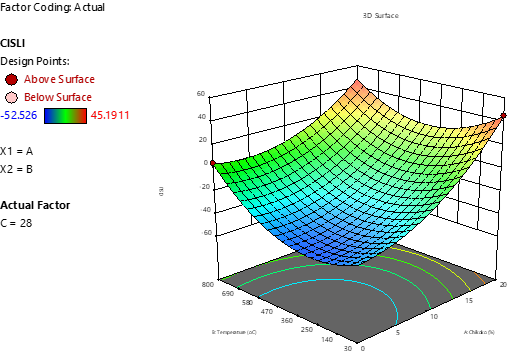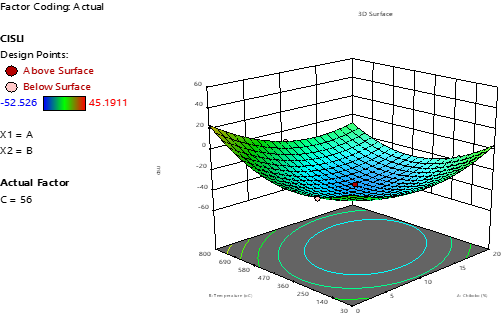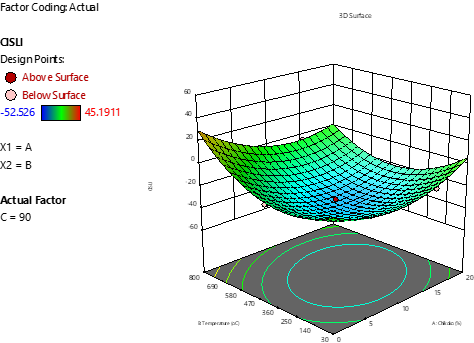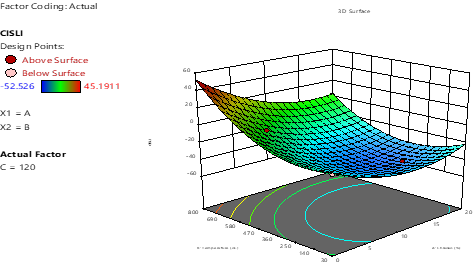Data Analysis and Model Development for Chloride Attack Strength Loss Index in Chikoko Blended Concrete
- Overo K.E.
- Damini Righteous Gilbert
- 134-146
- Jul 1, 2024
- Education
Data Analysis and Model Development for Chloride Attack Strength Loss Index in Chikoko Blended Concrete
Overo K.E.1, Damini Righteous Gilbert2
1Department of Civil Engineering, Niger Delta University, Wilberforce Island, Nigeria
2Department of Civil Engineering Federal University Otuoke Bayelsa State Nigeria
DOI: https://doi.org/10.51584/IJRIAS.2024.906012
Received: 05 May 2024; Accepted: 16 May 2024; Published: 01 July 2024
ABSTRACT
This study investigates the resistance of Chikoko blended concrete to chloride attack, which is critical for ensuring the durability and longevity of concrete structures. Chloride attack is a major concern for concrete structures, as it can lead to corrosion of embedded steel reinforcement, undermining structural integrity. The study employs the chloride attack strength loss index (CASLI) to gauge performance, examining the influence of various factors, including Chikoko concentration, calcination temperature, and curing age. A comprehensive analysis demonstrates a quadratic relationship between these factors and compressive strength. The optimal outcome occurs at a 10% Chikoko concentration and calcination temperatures ranging from 400°C to 800°C. These conditions yield a concrete with high resistance to chloride attack and robust compressive strength. A quadratic model was developed using design Expert 13 in other to predict CASLI derived from the data, providing a reliable tool for forecasting the durability of Chikoko blended concrete under chloride exposure. The study also identifies key independent variables for further optimization, enabling concrete with both high chloride resistance and enhanced compressive strength. This approach shows considerable improvements over traditional concrete made with natural sand, suggesting Chikoko blended concrete as a viable alternative for high-performance applications. Overall, the results indicate that Chikoko blended concrete has significant potential for use in construction, combining durability with high strength. This makes it a promising material for a variety of construction projects, particularly where chloride exposure is a concern, such as in coastal environments or de-icing salt-exposed structures.
Keywords: Chikoko Blended Concrete, Chloride Attack Resistance, Compressive Strength, Calcination Temperature, Quadratic Model
INTRODUCTION
Concrete is the most widely used material in the construction industry, often referred to as the foundation of a nation’s infrastructure development [1]. However, its longevity can be compromised in chloride-rich environments. This is because chloride accelerates the corrosion of steel reinforcement, reducing the durability of concrete structures. Concrete typically results from the chemical reaction between hydraulic cement and water, with additives such as pozzolan, fly ash, and blast furnace slag. It primarily comprises cement, water, and aggregates, with admixtures added to improve performance [2].
In the Niger Delta region of Nigeria, Chikoko soil is a soft, highly compressible soil with moisture content exceeding 80%, presenting significant challenges for construction. This soil has low strength, low permeability, and low bearing capacity, making it inadequate for structural support or subgrade material without modification. Typical approaches for stabilizing Chikoko include adding lime, cement, or other chemicals [3,4]. Due to its high compressibility, Chikoko soil is prone to deformation under construction loads, necessitating careful handling [5].
Studies like those by [6] ] [3] [7] [8] [9] indicate that Chikoko soil has a high silica content, exceeding 62% by weight depending on the extraction site. This high silica content suggests that Chikoko might be suitable as an additive in concrete or other blended construction materials.
In this study, an analysis of the chloride attack strength loss index (CASLI) in concrete blended with Chikoko provides further insights into this material’s behaviour. The study examines how varying the calcination temperature of Chikoko, along with different concrete admixture concentrations and curing ages, impacts concrete’s resistance to chloride-induced degradation.
MATERIALS AND METHODS
2.1 Collection of Materials and Apparatus
The basic research materials are as follows
i. Chikoko (Deltaic Lateritic Soils)
This study used two different samples of deltaic lateritic soils, sourced from Okrika in Rivers State and from a transition zone.
ii. Coarse Aggregate
Crushed granite with a maximum particle size of 12.7mm was used as coarse aggregate. Its grading and other characteristics adhered to BS EN 12620 standards. This specific size was chosen to ensure consistent compaction across all concrete test samples.
iii. Fine Aggregate
The fine aggregate used was sand from the Abraka River, primarily consisting of quartzite, with grading properties that met the BS EN 12620:2013 standards.
iv. Cement
Cement, a critical binding material, plays an essential role in modern construction. The cement used in this study had a compressive strength of 42.5 N/mm², commonly known as 42.5-grade cement, with the 50kg Dangote brand selected for this purpose.
v. Water
The water used for mixing the concrete came from Niger Delta University’s Civil Engineering Department. It was considered suitable and of good potable quality.
vi. Grinding Machine
The grinding machine was used for pulverizing the calcined chikoko samples into fine (powder) sizes passing 75µm sieve as shown in plate 1.
Plate 1: Blending of Chikoko clay
2.2 Experimental Design
Chikoko blended concrete was manufactured using pulverized sand and subjected to varying calcination temperatures, admix concentrations, and concrete curing ages. The aim was to study the impact of chloride attack on concrete strength. The results of various experiments and their analysis are presented in multiple tables and figures, with the emphasis on compressive strength (CS) over different curing ages, ranging from 7 to 120 days.
2.3 Experiments and Data Collection
In our experiments, Chikoko blended concrete was manufactured using pulverized sand and various concentrations of Chikoko additive. The key parameters in our study included:
- Chikoko Calcination Temperature: We explored a range of temperatures from atmospheric (200°C) to 800°C.
- Chikoko Concentration: We investigated admixture concentrations from 0% to 20%.
- Concrete Curing Age: We examined curing periods ranging from 7 to 120 days.
- Chloride attack strength loss data was gathered from multiple laboratory tests, with compressive strength (CS) measurements at specified intervals.
- Sulphate attack strength loss data was gathered from multiple laboratory tests, with compressive strength (CS) measurements at specified intervals
2.3.1 Chloride Attack
The marine environment’s high salt content, predominantly composed of chloride ions (2%), makes it a major source of chloride attack. Sea water contains about 3.5% salt, with sodium chloride constituting 78% and magnesium sulphate 15%. This high chloride content leads to corrosive attacks, particularly on concrete structures. A study [10] [11] used a 10% sodium chloride solution to accelerate chloride reactions in concrete. The Corrosion Resistance Coefficient (CRC) method, termed the Chloride Induced Strength Loss Index (CISLI), was used to assess strength loss due to chloride attack in concrete cured in fresh water versus those cured in chloride solution. Compressive strength was measured at 28, 56, and 90 days to evaluate the effects of chloride exposure.
The Weight Loss (%) and chloride induce strength loss index between the concretes cured in fresh water and concrete cured in chloride solution was calculated as follows;
RESULTS AND DISCUSSION
Table 1: Effect of Sand type and Chikoko Concentration on the Chloride Resistance of Chikoko blended Concrete (Chikoko Produced at Atmospheric Temperature)
| Compressive strength (N/mm2) | |||||||||
| %CHIK | 7Day | 14Day | 28Day | 56Day | 90Day | 120Day | SAI | NS 28 | NS 120 |
| 0 | 13.55 | 16.29 | 20.74 | 27.15 | 29.01 | 29.58 | 25.34 | 33.78 | 39.81 |
| 5 | 15.53 | 18.59 | 23.48 | 31.92 | 34.33 | 35.18 | 25.34 | 33.78 | 39.81 |
| 10 | 16.45 | 19.31 | 24.15 | 32.48 | 34.87 | 35.63 | 25.34 | 33.78 | 39.81 |
| 15 | 18.07 | 20.52 | 25.70 | 29.04 | 31.00 | 32.09 | 25.34 | 33.78 | 39.81 |
| 20 | 4.45 | 8.87 | 8.89 | 17.19 | 19.81 | 20.16 | 25.34 | 33.78 | 39.81 |
Figure 1: Chart presenting the effect of Sand type and Chikoko Concentration on the Chloride Resistance of Chikoko blended Concrete (Chikoko Produced at 200oC)
Figure 2: Chart presenting the effect of Sand type and Chikoko Concentration on the Chloride Resistance of Chikoko blended Concrete (Chikoko Produced at 400oC)
Figure 3: Chart presenting the effect of Sand type and Chikoko Concentration on the Chloride Resistance of Chikoko blended Concrete (Chikoko Produced at 600oC)
Figure 4: Chart presenting the effect of Sand type and Chikoko Concentration on the Chloride Resistance of Chikoko blended Concrete (Chikoko Produced at 800oC)
This study examines the impact of Chikoko, a naturally occurring additive, on the compressive strength of concrete subjected to chloride exposure. Concrete samples with varying concentrations of Chikoko were tested to assess their 28-day compressive strength at different calcination temperatures. At atmospheric temperature (ATM), compressive strength exhibited a quadratic trend with increasing Chikoko concentration. Concrete with a 10% Chikoko admixture achieved a 16.92% increase in strength over the PS control, despite being 13.93% lower than the NS concrete control. This suggests that Chikoko may mitigate the adverse effects of chloride exposure in concrete with uniformly graded fine aggregate. Similar trends have been observed in studies investigating the use of natural pozzolans, which also reported improved concrete performance due to enhanced bonding and reduced permeability when exposed to aggressive environments [12].
Calcination at 200 degrees Celsius showed similar quadratic patterns. With a 10% Chikoko admixture, compressive strength increased by 54.12% over the ATM baseline, 79.37% over the PS control, and 10.28% over the NS control. This temperature potentially boosts both sulfate resistance and compressive strength. This aligns with existing studies indicating that elevated temperatures can enhance the pozzolanic reactivity of natural additives, thereby improving concrete strength and durability [13].
Calcination at 400 degrees Celsius yielded significant improvements in resistance to chloride attack. A 10% Chikoko admixture reached 40.44 N/mm², representing a 67.45% increase over the ATM baseline, 97.75% over the PS control, and 19.72% over the NS control. This temperature appears highly effective for concrete in sulphate-rich environments. This is consistent with findings that higher calcination temperatures can enhance the chemical stability of natural additives, resulting in superior mechanical properties [14]. Meanwhile at 600 degrees Celsius, a 10% Chikoko admixture reached 39.55 N/mm², 63.77% higher than the ATM baseline, 90.69% greater than the PS control, and 17% more than the NS control, albeit slightly less than results from 400 degrees Celsius. The benefits of calcination at this temperature may include the optimal activation of mineral phases that contribute to improved compressive strength [15].
At 800 degrees Celsius, the quadratic trend continued. The best compressive strength was found within the 5 to 15% Chikoko range. Across all conditions, Chikoko as an additive yielded considerable increases in compressive strength, indicating its effectiveness in enhancing concrete durability in chloride-prone environments. At curing ages of 28 days, the CS of the specimens as exposed to chloride e attack are 20.74, 36.74, 39.7, 36.98, and 29.11 N/mm2 accordingly for compositions including 0, 5, 10, 15, and 20% Chikoko admixture. This suggests its potential as a cost-effective and environmentally friendly additive for improving concrete performance [16].
Table 2: Input Data for the Analysis, Model Development and Optimization of the CASLI of Chikoko Blended Concrete using Pulverized Fine Aggregate
| Run | Chikoko | Temperature | Curing Age | Comp. strength | CASLI | SASLI |
| % | oC | Days | N/mm2 | (%) | (%) | |
| 1 | 0 | 800 | 28 | 21.78 | 4.72 | -7.67 |
| 2 | 10 | 400 | 90 | 36.15 | -30.93 | -31.98 |
| 3 | 10 | 30 | 7 | 18.74 | 12.22 | 9.66 |
| 4 | 5 | 30 | 90 | 30.21 | -13.64 | 7.55 |
| 5 | 10 | 400 | 56 | 34.22 | -32.90 | -26.62 |
| 6 | 0 | 800 | 7 | 13.4 | -1.12 | -22.39 |
| 7 | 0 | 400 | 7 | 13.4 | -1.12 | -22.39 |
| 8 | 5 | 600 | 120 | 38.34 | -5.03 | -14.87 |
| 9 | 10 | 400 | 7 | 25.93 | -52.53 | -55.42 |
| 10 | 20 | 400 | 7 | 20.58 | -16.03 | -2.28 |
| 11 | 15 | 30 | 90 | 27.77 | -11.63 | -6.45 |
| 12 | 20 | 30 | 28 | 16.22 | 45.19 | -3.88 |
| 13 | 10 | 800 | 56 | 36.59 | -10.55 | -14.79 |
| 14 | 15 | 600 | 28 | 32.22 | 0.53 | -22.13 |
| 15 | 15 | 200 | 120 | 26.88 | -40.51 | -41.78 |
| 17 | 5 | 200 | 28 | 26.2 | -40.38 | -23.93 |
| 18 | 20 | 800 | 120 | 33.91 | 1.68 | -9.11 |
| 19 | 0 | 200 | 56 | 24.04 | -12.94 | -9.36 |
| 20 | 15 | 800 | 90 | 38.13 | -5.25 | -13.09 |
| 21 | 15 | 200 | 120 | 26.88 | -40.51 | -41.78 |
| 22 | 15 | 600 | 28 | 32.22 | 0.53 | -22.13 |
| 23 | 0 | 30 | 120 | 26.48 | -11.71 | -1.96 |
| 24 | 20 | 200 | 56 | 23.76 | -16.37 | -14.86 |
| 25 | 10 | 800 | 56 | 36.59 | -10.55 | -14.79 |
| 26 | 0 | 400 | 90 | 25.43 | -14.08 | -5.03 |
| 27 | 5 | 200 | 28 | 26.2 | -40.38 | -23.93 |
| 28 | 5 | 600 | 120 | 38.34 | -5.03 | -14.87 |
Table 3: Model Fit Summary for the CASLI of Chikoko blended concrete
| Source | Sequential p-value | Lack of Fit p-value | Adjusted R² | Predicted R² | |
| Linear | 0.9252 | -0.1814 | -0.6124 | ||
| 2FI | 0.3631 | -0.0771 | -4.7497 | ||
| Quadratic | < 0.0001 | 0.8329 | 0.3232 | Suggested | |
| Cubic | 1.0000 | Aliased |
It is common practise for the design to suggest a variety of potential models and then recommend the model that would be the most useful based on the confidence interval, which is quantified by the model’s P-Value. A P-value of 0.05 or below is acceptable when analysing data with a confidence interval of 95%. As a consequence of this, the quadratic model is acceptable as it is advised by the analysis based on the suggested models that are provided in Table 4
Table 4: Analysis of Variance (ANOVA) for the CASLI of Chikoko blended concrete
| Source | Sum of Squares | df | Mean Square | F-value | p-value | |
| Model | 10081.20 | 17 | 593.01 | 8.92 | 0.0006 | significant |
| A-Chikoko | 0.0367 | 1 | 0.0367 | 0.0006 | 0.9817 | |
| B-Temperature | 666.47 | 1 | 666.47 | 10.02 | 0.0101 | |
| C-Curing Age | 386.85 | 4 | 96.71 | 1.45 | 0.2868 | |
| AB | 436.85 | 1 | 436.85 | 6.57 | 0.0282 | |
| AC | 3385.78 | 4 | 846.44 | 12.73 | 0.0006 | |
| BC | 2204.13 | 4 | 551.03 | 8.29 | 0.0032 | |
| A² | 990.64 | 1 | 990.64 | 14.90 | 0.0032 | |
| B² | 2023.27 | 1 | 2023.27 | 30.42 | 0.0003 | |
| Residual | 665.08 | 10 | 66.51 | |||
| Lack of Fit | 665.08 | 5 | 133.02 | |||
| Pure Error | 0.0000 | 5 | 0.0000 | |||
| Cor Total | 10746.28 | 27 |
The Model F-value of 8.92 signifies the model’s significance, with only a 0.06% probability that such a large F-value could occur due to random noise. P-values below 0.0500 indicate the significance of model terms, rejecting the null hypothesis. In this instance, model terms B, AB, AC, BC, A², and B² are considered significant. However, model terms ‘A’ and ‘C’ exhibit insignificant values of 0.9817 and 0.2868, respectively.
Table 5: Coefficient of Regression for the CASLI of Chikoko blended concrete
| Std. Dev. | 1.01 | R2 | 0.9381 |
| Mean | 28.02 | Adjusted R2 | 0.8329 |
| C.V. % | 3.61 | Predicted R2 | 0.3232 |
| Adeq Precision | 13.1389 |
The model’s R², adjusted R², and predicted R² coefficients are 0.9381, 0.8329, and 0.3232, respectively, according to Table 6. These values relate to the overall sum of squares and the residual sum after revisualization. The mean value of 28.02 is multiplied by 1.01 to get the standard deviation, and the coefficient of variation (3.61%) is derived similarly. Because this coefficient of variation is below 30%, the model is deemed statistically reliable. Adeq Precision, calculated at 13.1389, indicates a satisfactory signal-to-noise ratio, suggesting the model can be used to investigate the design space. Additionally, all model coefficients for the chloride attack strength loss index have Variance Inflation Factors (VIFs) under 10, indicating minimal multi-collinearity.
Table 6: Model Coefficients for the CASLI of Chikoko blended concrete
| Term | Coefficient Estimate | df | Standard Error | 95% CI Low | 95% CI High | VIF |
| Intercept | -34.04 | 1 | 3.00 | -40.73 | -27.35 | |
| A-Chikoko | -0.0311 | 1 | 2.61 | -5.84 | 5.78 | 1.29 |
| B-Temperature | 4.94 | 1 | 2.30 | -0.1879 | 10.06 | 1.18 |
| C[1] | 0.0700 | 1 | 3.14 | -6.94 | 7.08 | |
| C[2] | 6.06 | 1 | 3.09 | -0.8253 | 12.95 | |
| C[3] | -3.36 | 1 | 3.33 | -10.79 | 4.06 | |
| C[4] | -0.1911 | 1 | 3.49 | -7.96 | 7.58 | |
| AB | -9.25 | 1 | 3.61 | -17.30 | -1.21 | 1.35 |
| AC[1] | -4.79 | 1 | 4.87 | -15.64 | 6.06 | |
| AC[2] | 31.22 | 1 | 4.66 | 20.84 | 41.61 | |
| AC[3] | -6.85 | 1 | 5.35 | -18.77 | 5.06 | |
| AC[4] | -4.47 | 1 | 6.24 | -18.39 | 9.44 | |
| BC[1] | -23.09 | 1 | 4.64 | -33.43 | -12.74 | |
| BC[2] | 6.03 | 1 | 4.46 | -3.90 | 15.96 | |
| BC[3] | -2.19 | 1 | 5.78 | -15.08 | 10.69 | |
| BC[4] | 2.39 | 1 | 4.91 | -8.55 | 13.33 | |
| A² | 18.04 | 1 | 4.68 | 7.63 | 28.46 | 1.60 |
| B² | 24.86 | 1 | 4.51 | 14.82 | 34.91 | 1.52 |
The Models developed are therefore as shown below;
C₇=27.38-3.09C-0.16T-0.002CT+0.18C2+0.00017×T2 (3)
C₂₈=-34.03+0.51C-0.009 T-0.002CT+0.18 C2+0.00017×T2 (4)
C₅₆=3.49-3.30C-0.11 T-0.002CT+0.18C2+0.00017×T2 (5)
C₉₀=-0.66-3.06C-0.10 T-0.002CT+0.18C2+0.00017×T2 (6)
C120= -8.00-4.13C-0.06 T-0.002CT+0.18C2+0.00017×T2 (7)
Where;
C7 = 7 day CASLI of Chikoko blended concrete (%)
C28 = 28 day CASLI of Chikoko blended concrete (%)
C56 = 56 day CASLI of Chikoko blended concrete (%)
C90 = 90 day CASLI of Chikoko blended concrete (%)
C120 = 120 day CASLI of Chikoko blended concrete (%)
C = Percentage of Chikoko admixture in cement mix (%)
T2 = Calcination temperature of Chikoko
Figure 5: Model diagnostics for the CASLI of chikoko blended concrete
Figure 6: Model simulations for 7day CASLI of Chikoko blended concrete
Figure 7: Model simulations for 28day CASLI of chikoko blended concrete
Figure 8: Model simulations for 56day CASLI of chikoko blended concrete
Figure 9: Model simulations for 90day CASLI of chikoko blended concrete
Figure 10: Model simulations for 120-day CASLI of Chikoko blended concrete
Figure 5-10 illustrates the influence of calcination temperature and additive content on the Chloride Attack Strength Loss Index (CASLI) for Chikoko cement-blended concrete, showing the effect on various curing ages. The relationship between Chikoko admixture and CASLI follows a quadratic pattern, with a trough in the 5 to 15% concentration range. Similarly, the impact of calcination temperature on CASLI is also quadratic across all concentrations, with strength loss increasing as temperature rises. As curing ages increase, the Chikoko content that minimizes strength loss shifts from lower to middle concentrations.
Table 7: Model Validation for CASLI at 28 days
| 28 Days Data Validation | ||||
| Chik. Cont. (%) | Calc. Temp. (oC) | Lab. Results | Model | Similarity Index (%) |
| 0% | ATM | 21.78 | 19.13 | 87.82 |
| 200.00 | 21.78 | 19.88 | 91.26 | |
| 400.00 | 21.78 | 20.57 | 94.43 | |
| 600.00 | 21.78 | 21.05 | 96.65 | |
| 800.00 | 21.78 | 21.33 | 97.93 | |
| 5% | ATM | 23.1 | 25.16 | 108.93 |
| 200.00 | 26.2 | 26.68 | 101.82 | |
| 400.00 | 29.34 | 28.27 | 96.34 | |
| 600.00 | 29.11 | 29.65 | 101.86 | |
| 800.00 | 33.11 | 30.83 | 93.11 | |
| 10% | 30.00 | 25.36 | 26.70 | 105.27 |
| 200.00 | 30.22 | 28.98 | 95.89 | |
| 400.00 | 31.34 | 31.47 | 100.41 | |
| 600.00 | 33.34 | 33.75 | 101.23 | |
| 800.00 | 36.00 | 35.83 | 99.52 | |
| 15% | 30.00 | 23.11 | 23.73 | 102.69 |
| 200.00 | 26.12 | 26.78 | 102.51 | |
| 400.00 | 28.11 | 30.17 | 107.32 | |
| 600.00 | 32.22 | 33.35 | 103.51 | |
| 800.00 | 34.48 | 36.33 | 105.36 | |
| 20% | 30.00 | 16.22 | 16.27 | 100.29 |
| 200.00 | 23 | 20.08 | 87.29 | |
| 400.00 | 24.9 | 24.37 | 97.86 | |
| 600.00 | 26.73 | 28.45 | 106.44 | |
| 800.00 | 31.01 | 32.33 | 104.25 | |
| Average Similarity Index | 99.60 | |||
3.1 Model Validation
Table 7 presents the model validation for CASLI at 28 days, showing the similarity index between laboratory results and model predictions. Our study’s models were validated through similarity index comparisons (Table 7), with an average similarity index of 99.60% between laboratory results and model predictions, reinforcing the accuracy of our models.
CONCLUSION
The study reveals that Chikoko, when used as an additive in concrete, has the potential to improve compressive strength and resistance to chloride attacks. A quadratic pattern emerged, indicating that the optimal concentration of Chikoko is between 5% and 15%, with the most favourable results at a 10% admixture concentration. The ideal calcination temperatures for Chikoko to enhance compressive strength and durability are between 200 and 600 degrees Celsius.
Concrete specimens with Chikoko admixture showed increased compressive strength compared to the PS control and improved resistance to chloride attack, particularly when calcined at 400 degrees Celsius. The best performance was observed with a 10% Chikoko admixture calcined at 400 degrees Celsius, suggesting that this combination offers the highest resistance to chloride attack and the greatest compressive strength among the tested variables. Additionally, calcination temperatures above 400 degrees Celsius may result in a decrease in compressive strength, indicating that there is an optimal range for calcination.
RECOMMENDATION
While the current study highlights the potential of Chikoko blended concrete in chloride-exposed environments, future research should expand the scope to include other aggressive conditions such as sulphate attack, freeze-thaw cycles, and carbonation. Investigating the material’s performance in diverse structural elements (e.g., beams, columns, and slabs) and under various load conditions can validate its versatility and reliability.
The, developing performance metrics beyond compressive strength and chloride resistance, such as tensile strength, flexural strength, and impact resistance, will provide a comprehensive assessment of its suitability for different construction situations.
REFERENCE
- Dhanalakshmi M, Dr Sowmya NJ, Dr Chandrashekar. A (2015). A Comparative study on Egg Shell Concrete with Partial replacement of cement by Fly Ash. International journal of engineering research &technology Vol 4, (05) 2278-0181
- ASTM C618 (2015). American Society for Testing and Materials: Specification for Coal Fly Ash and Raw or Calcined Natural Pozzolan for Use in Concrete. ASTM International, West Conshohocken, USA
- Otoko, G. R. (2014). On the economic use of cement in soil stabilization. International Journal of Engineering and Technology Research, Vol2, (1), 01-07.
- Orumu S.T. and Overo K.E. (2020). Burnt Pulverized Chikoko (BPC) in Concrete Production: An Admixture and a Cement Replacement Investigation. Journal of Scientific and Engineering Research, 7(10), pp 153-159.
- Taha, M. R. (2009). Geotechnical Properties of Soil-Ball Milled Soil Mixtures. In Proceedings of third International Symposium on Nanotechnology in Construction Prague. 377-382
- Hafez, M.A., Sidek, N. & Noor, M.J. (2008). Effect of Pozzolanic Process on the Strength of Stabilized Lime Clay. Electronic Journal of Geotechnical Engineering, 13, 1-19
- Orumu S.T. and Overo K.E. (2020). Burnt Pulverized Chikoko (BPC) in Concrete Production: And Admixture and a Cement Replacement Investigation. Journal of Scientific and Engineering Research, 7(10), pp 153-159
- Onwuka, D. O., and Sule, S. 2017. Prediction of compressive strength of chikoko-cement concrete using Scheffe’s Polynomial Function. USEP: Journal of Research Information in Civil Engineering, 14(1), 1338-1358.
- Ottos, C. G., and Nyebuchi, D (2018). Laboratory Investigation of the Effect of Chikoko Mud on the Compressive Strength of Portland Cement Concrete. International Journal of New Technology and Research, 4(3), 263108.
- Mac-Eteli and Overo, 2020. Modelling the Chloride Induced Strength Loss Index of Periwinkle and Clam Shell Ash Hybridized Pozzolan in Concrete. American Journal of Engineering Research 10(8):292-300
- Mac-Eteli and Overo, 2020. Modelling the Chloride Induced Strength Loss Index of Periwinkle and Clam Shell Ash Hybridized Pozzolan in Concrete. American Journal of Engineering Research 10(8):292-300
- Ramezanianpour, A. A., & Malhotra, V. M. (1995). Effect of curing on the compressive strength, resistance to chloride-ion penetration and porosity of concretes incorporating slag, fly ash or silica fume. Cement and Concrete Composites, 17(2), 125-133.
- Mertens, G., Elsen, J., Snellings, R., & Driessche, I. V. (2009). Pozzolanic reactions of common natural zeolites with lime and parameters affecting their reactivity. Cement and Concrete Research, 39(3), 233-240.
- Antiohos, S., Maganari, K., & Tsimas, S. (2005). Evaluation of blends of high and low calcium fly ashes for use as supplementary cementing materials. Cement and Concrete Composites, 27(3), 349-356.
- Frías, M., Villar-Cociña, E., Valencia-Morales, E., & Savastano Jr, H. (2008). Characterization and properties of blended cement matrices containing activated bamboo leaf wastes. Cement and Concrete Composites, 30(9), 846-850.
- Cabrera, J. G., & Claisse, P. A. (2001). Mechanisms and methods for durability improvement. Proceedings of the International Conference on Concrete for Extreme Conditions, 207-214.

